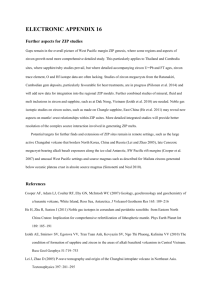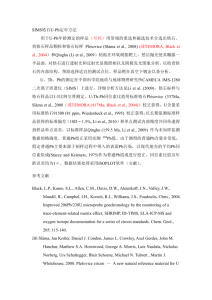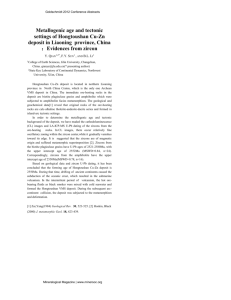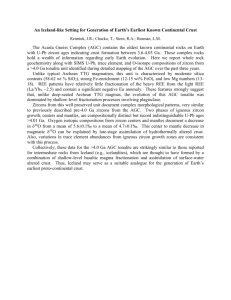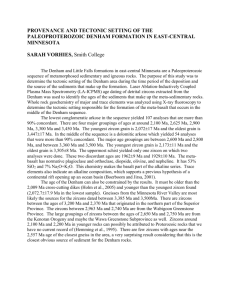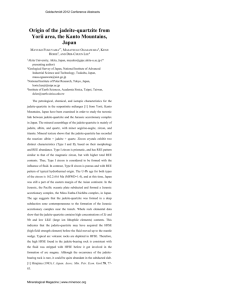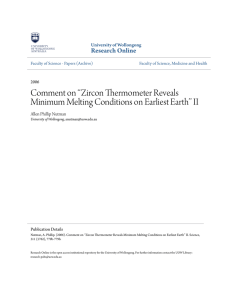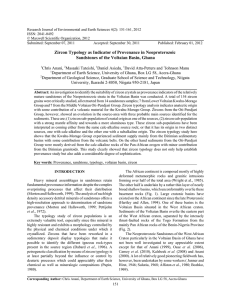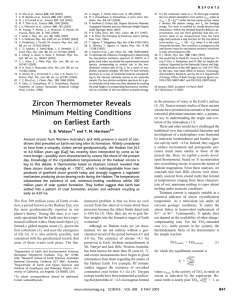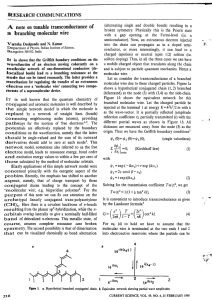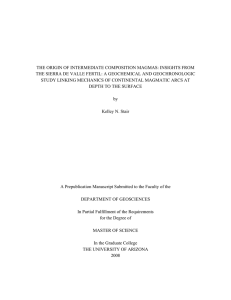Elemental and isotopic characteristics of zircon from mafic
advertisement
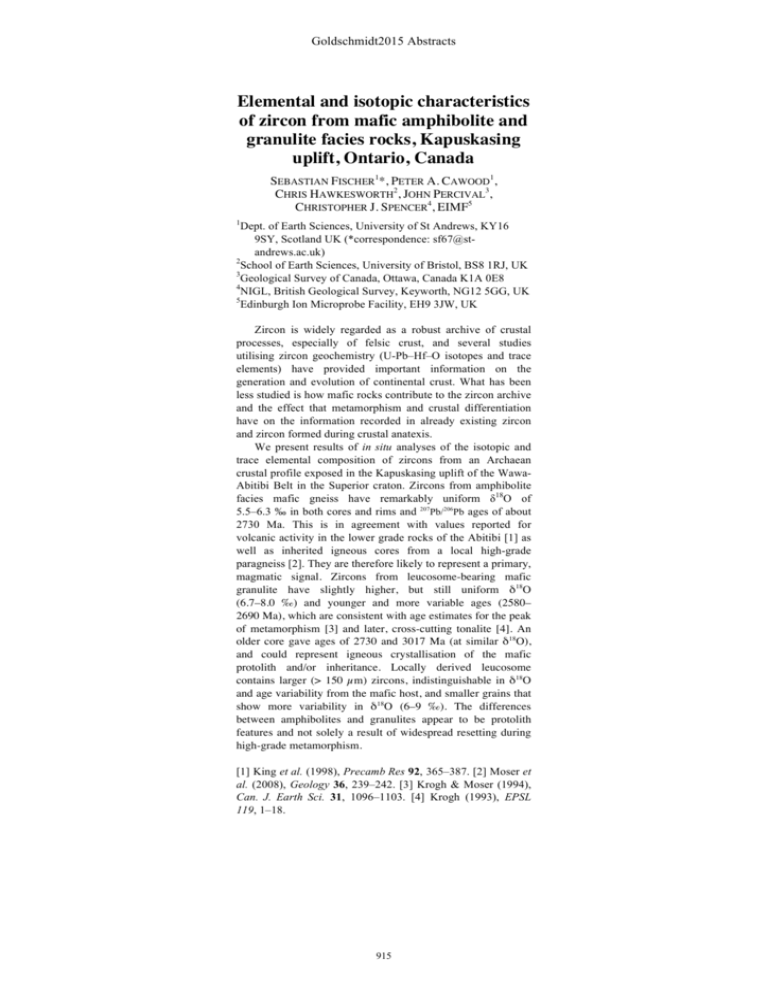
Goldschmidt2015 Abstracts Elemental and isotopic characteristics of zircon from mafic amphibolite and granulite facies rocks, Kapuskasing uplift, Ontario, Canada SEBASTIAN FISCHER1*, PETER A. CAWOOD1, CHRIS HAWKESWORTH2, JOHN PERCIVAL3, CHRISTOPHER J. SPENCER4, EIMF5 1 Dept. of Earth Sciences, University of St Andrews, KY16 9SY, Scotland UK (*correspondence: sf67@standrews.ac.uk) 2 School of Earth Sciences, University of Bristol, BS8 1RJ, UK 3 Geological Survey of Canada, Ottawa, Canada K1A 0E8 4 NIGL, British Geological Survey, Keyworth, NG12 5GG, UK 5 Edinburgh Ion Microprobe Facility, EH9 3JW, UK Zircon is widely regarded as a robust archive of crustal processes, especially of felsic crust, and several studies utilising zircon geochemistry (U-Pb–Hf–O isotopes and trace elements) have provided important information on the generation and evolution of continental crust. What has been less studied is how mafic rocks contribute to the zircon archive and the effect that metamorphism and crustal differentiation have on the information recorded in already existing zircon and zircon formed during crustal anatexis. We present results of in situ analyses of the isotopic and trace elemental composition of zircons from an Archaean crustal profile exposed in the Kapuskasing uplift of the WawaAbitibi Belt in the Superior craton. Zircons from amphibolite facies mafic gneiss have remarkably uniform δ18O of 5.5–6.3 ‰ in both cores and rims and 207Pb/206Pb ages of about 2730 Ma. This is in agreement with values reported for volcanic activity in the lower grade rocks of the Abitibi [1] as well as inherited igneous cores from a local high-grade paragneiss [2]. They are therefore likely to represent a primary, magmatic signal. Zircons from leucosome-bearing mafic granulite have slightly higher, but still uniform δ18O (6.7–8.0 ‰) and younger and more variable ages (2580– 2690 Ma), which are consistent with age estimates for the peak of metamorphism [3] and later, cross-cutting tonalite [4]. An older core gave ages of 2730 and 3017 Ma (at similar δ18O), and could represent igneous crystallisation of the mafic protolith and/or inheritance. Locally derived leucosome contains larger (> 150 µm) zircons, indistinguishable in δ18O and age variability from the mafic host, and smaller grains that show more variability in δ18O (6–9 ‰). The differences between amphibolites and granulites appear to be protolith features and not solely a result of widespread resetting during high-grade metamorphism. [1] King et al. (1998), Precamb Res 92, 365–387. [2] Moser et al. (2008), Geology 36, 239–242. [3] Krogh & Moser (1994), Can. J. Earth Sci. 31, 1096–1103. [4] Krogh (1993), EPSL 119, 1–18. 915 915

